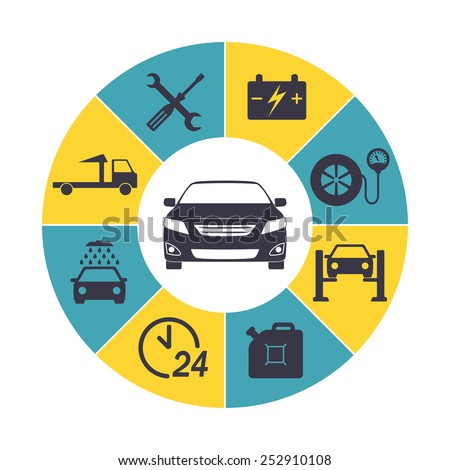Realizing The Importance Of Your Car'S Warning Signals: What They Actually Represent
Realizing The Importance Of Your Car'S Warning Signals: What They Actually Represent
Blog Article
Team Author-Lim Gilbert
When you're behind the wheel, those glowing caution lights on your control panel can be a bit puzzling. Do you understand what they're trying to inform you about your car's wellness? Comprehending the importance of these lights is important for your security and the longevity of your car. So, the following time among those lights pops up, wouldn't you intend to understand its message accurately and take the required actions to address it?
Common Warning Lighting and Interpretations
Determine typical caution lights in your cars and truck and recognize their definitions to ensure safe driving.
One of the most normal caution lights consist of the check engine light, which signifies issues with the engine or emissions system. If this light comes on, it's important to have your car inspected without delay.
gardx ceramic coating alerting light shows low oil stress, calling for instant attention to prevent engine damages.
A blinking battery light could suggest a faulty charging system, potentially leaving you stranded otherwise addressed.
The tire stress tracking system (TPMS) light alerts you to low tire stress, influencing vehicle security and gas effectiveness. Ignoring this might cause harmful driving conditions.
The abdominal muscle light shows a problem with the anti-lock stopping system, compromising your capability to stop swiftly in emergencies.
Lastly, the coolant temperature level warning light warns of engine getting too hot, which can cause serious damages if not dealt with quickly.
Understanding these common warning lights will certainly help you deal with problems quickly and maintain safe driving conditions.
Relevance of Prompt Focus
Recognizing the common caution lights in your cars and truck is only the primary step; the importance of quickly resolving these warnings can't be stressed sufficient to guarantee your safety when traveling.
When a caution light brightens on your dashboard, it's your vehicle's method of connecting a potential issue that needs focus. Disregarding these warnings can bring about more extreme issues later on, endangering your security and potentially costing you a lot more out of commission.
Motivate focus to alerting lights can stop break downs and accidents. For https://www.cnn.com/travel/article/road-trip-gas-prices-spring-summer-2022/index.html , a flashing check engine light could show a misfire that, if left ignored, can trigger damages to the catalytic converter. Addressing this quickly can conserve you from a pricey repair service.
Similarly, a brake system advising light may signal reduced brake fluid or worn brake pads, critical components for your safety when driving.
Do It Yourself Troubleshooting Tips
If you notice a warning light on your dashboard, there are a few do it yourself repairing pointers you can try before looking for professional aid.
The primary step is to consult your cars and truck's manual to comprehend what the certain warning light indicates. Occasionally https://brake-change-cost39406.liberty-blog.com/31312204/leading-5-myths-about-automobile-describing-debunked can be as simple as a loose gas cap triggering the check engine light. Tightening the gas cap may deal with the trouble.
One more common concern is a reduced battery, which can activate numerous advising lights. Inspecting the battery connections for corrosion and guaranteeing they're safe and secure may fix the issue.
If a caution light persists, you can try resetting it by separating the cars and truck's battery for a couple of mins and then reconnecting it. In addition, checking your car's liquid degrees, such as oil, coolant, and brake liquid, can help repair advising lights related to these systems.
Conclusion
In conclusion, comprehending your automobile's caution lights is necessary for maintaining your vehicle running efficiently and securely. By immediately resolving these notifies and knowing what they suggest, you can avoid costly repairs and potential failures.
Bear in mind to consult your vehicle's manual for specific details on each warning light and do something about it appropriately to ensure a hassle-free driving experience.
Keep notified, stay risk-free on the road!
